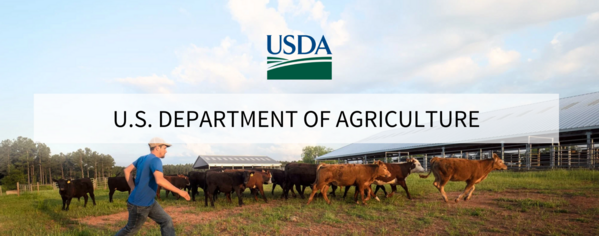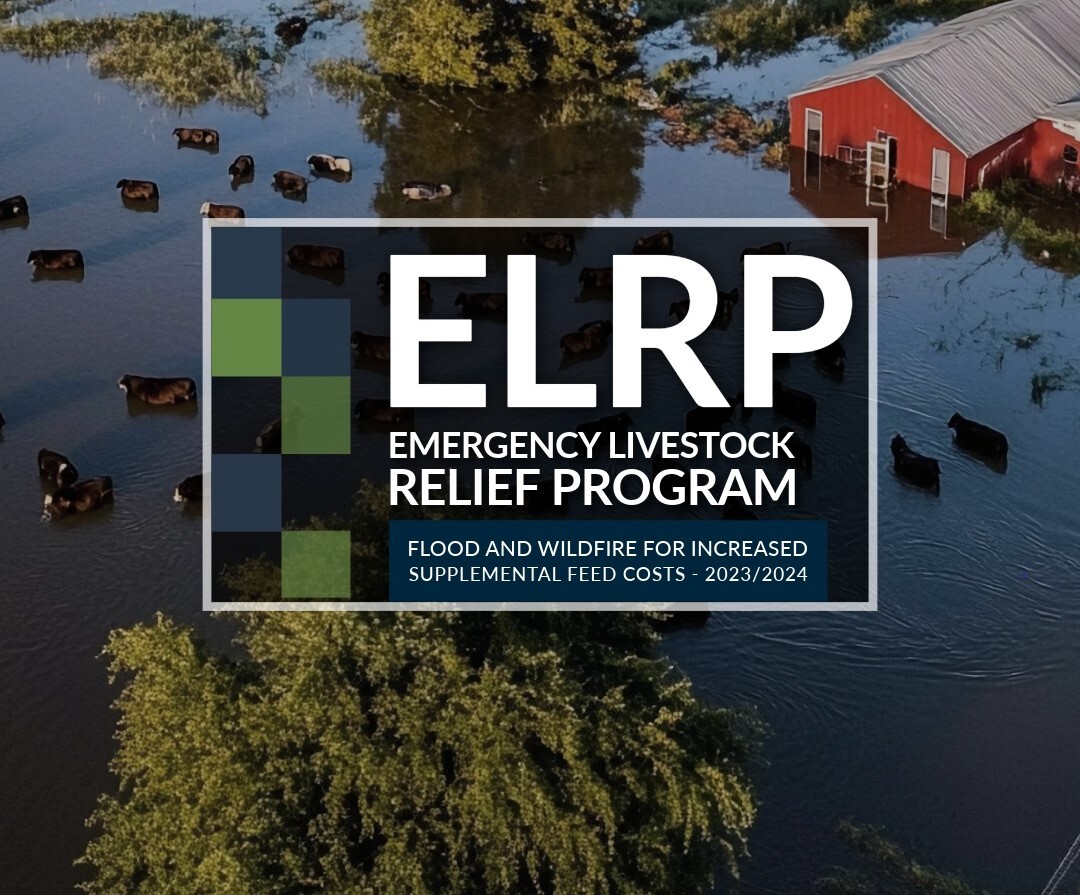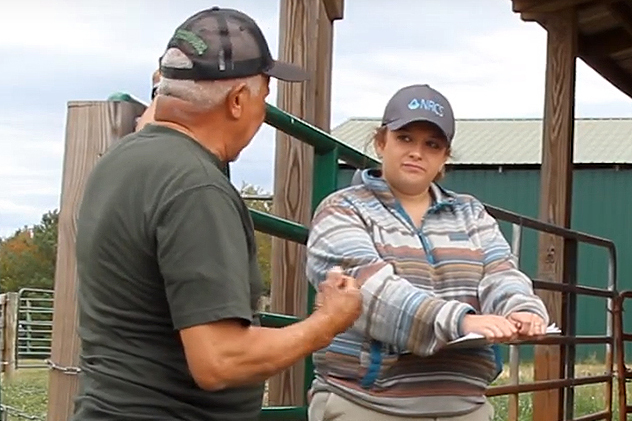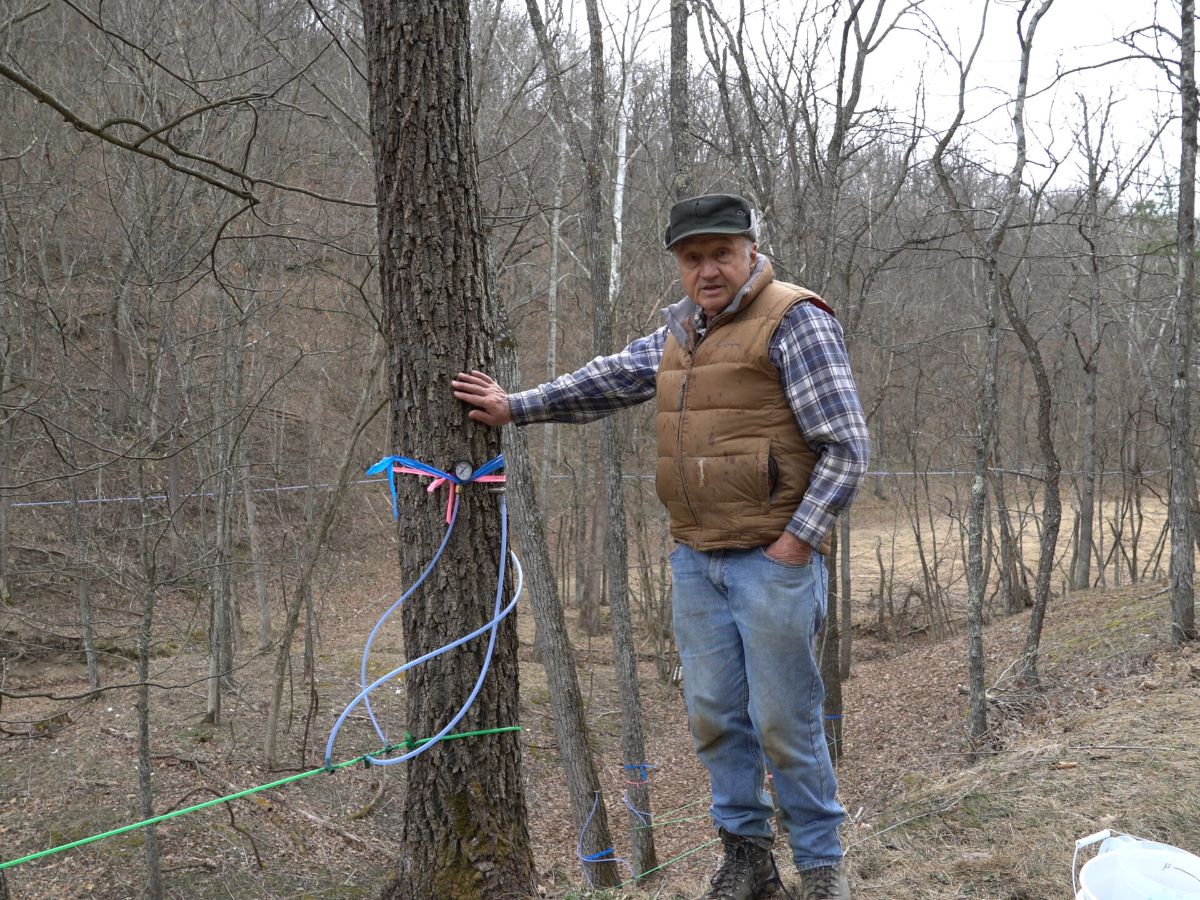USDA’s Office of External and Intergovernmental Affairs (EIA)
Message from the Director
September marked a momentous time at USDA with the announcement of the historic investment in Partnerships for Climate Smart Commodities. As you will hear in the Secretary’s speech below, the Biden-Harris Administration through the U.S. Department of Agriculture is investing up to $2.8 billion in 70 selected projects under the first pool of the Partnerships for Climate-Smart Commodities funding opportunity, with projects from the second funding pool to be announced later this year. Ultimately, USDA’s anticipated investment will triple to more than $3 billion in pilots that will create market opportunities for American commodities produced using climate-smart production practices. These initial projects will expand markets for climate-smart commodities, leverage the greenhouse gas benefits of climate-smart commodity production and provide direct, meaningful benefits to production agriculture, including for small and underserved producers. Applicants submitted more than 1,050 project proposals, totaling over $20 billion, in this funding opportunity, and the strength of the projects identified led USDA to increase its investment in this opportunity from the initial $1 billion Vilsack announced earlier this year.
EIA continues to hold its EIA Monthly Stakeholder’s Call to provide timely information on what’s happening at USDA and feature USDA staff speakers to highlight mission area announcements and programs. Join EIA for our next monthly stakeholders call on Tuesday, October 11. If you haven’t joined us for a call before, please use this form to be added to our list and receive the invitation when it is available (October Registration Link coming soon).
Please do not hesitate to reach out if you’d like any additional information on any of the programs or events you see within this newsletter or to learn more about USDA. It’s our goal to serve as a resource for you. In order to do so, we rely on your feedback. Please send us your input at eia@usda.gov.
My Best,
Liz Archuleta
Contact the USDA Office of External & Intergovernmental Affairs (EIA)
Liz Archuleta, Director PH: 202-941-4682 Email: Liz.Archuleta@usda.gov
Mia Mayberry, Deputy Director PH: 202-961-0879 Email: Mia.Mayberry@usda.gov
Samantha Joseph, Senior Advisor for Faith-Based and Neighborhood Partnerships, PH: 202-993-5110 Email: samantha.joseph@usda.gov
Jon Hurst, Special Assistant PH: 202-941-4695 Email: Jon.Hurst@usda.gov
General Inbox for Office of External & Intergovernmental Affairs: eia@usda.gov
Nutrition Insecurity
White House Conference on Hunger, Nutrition, and Health
Secretary Vilsack opened the historic White House Conference on Hunger, Nutrition, and Healthon Wednesday, September 28, which gathered over 500 attendees in person and thousands more online to commit to the goal of ending hunger and reducing diet-related diseases by 2030 – all while reducing disparities.
Ahead of the conference, the Administration released a National Strategy on Hunger, Nutrition, and Health. The National Strategy will serve as a playbook to end hunger and increasing healthy eating and physical activity by 2030 so fewer Americans experience diet-related diseases—while reducing related health disparities. The National Strategy identifies actions the Administration will pursue across five pillars:
1. Improving food access and affordability, including by advancing economic security; increasing access to free and nourishing school meals; providing Summer Electronic Benefits Transfer (EBT) benefits to more children; and expanding Supplemental Nutrition Assistance Program (SNAP) eligibility to more underserved populations;
2. Integrating nutrition and health, including by working with Congress to pilot coverage of medically tailored meals in Medicare; testing Medicaid coverage of nutrition education and other nutrition supports using Medicaid Section 1115 demonstration projects; and expanding Medicaid and Medicare beneficiaries’ access to nutrition and obesity counseling;
3. Empowering all consumers to make and have access to healthy choices, including by proposing to develop a front-of-package labeling scheme for food packages; proposing to update the nutrition criteria for the “healthy” claim on food packages; expanding incentives for fruits and vegetables in SNAP; facilitating sodium reduction in the food supply by issuing longer-term, voluntary sodium targets for industry; and assessing additional steps to reduce added sugar consumption, including potential voluntary targets;
4. Supporting physical activity for all, including by expanding the U.S. Department of Health and Human Services’ Centers for Disease Control and Prevention’s (CDC) State Physical Activity and Nutrition Program to all states and territories; investing in efforts to connect people to parks and other outdoor spaces; and funding regular updates to and promotion of the Physical Activity Guidelines for Americans; and
5. Enhancing nutrition and food security research, including by bolstering funding to improve metrics, data collection, and research to inform nutrition and food security policy, particularly on issues of equity and access; and implementing a vision for advancing nutrition science.
As Secretary Vilsack said in a statement upon release of the National Strategy: “Today’s release of the strategy is just the beginning. The recommendations made in the Biden-Harris National Strategy on Hunger, Nutrition, and Health are significant, and will require ongoing work to implement and execute on the proposals. The Strategy lays out big goals, and we need everyone – local, state, and tribal governments, Congress, private companies, nonprofit organizations, and everyday citizens – to work together to achieve them.”
For more on how USDA will build on the White House Conference to promote and elevate nutrition security, see this new report from USDA’s Food and Nutrition Service.
USDA Invests Nearly $2 Billion, Leverages American Agriculture to Feed Kids & Families
USDA announced on September 14 that it will provide close to $2 billion in additional funding to food banks and school meal programs for purchasing American-grown foods. The additional support will help these organizations endure supply chain challenges and elevated food costs as they continue to fulfill their mission of providing nutritious foods to kids and families in need.
The funds, provided through USDA’s Commodity Credit Corporation, or CCC, will be used in three ways:
· Nearly $1 billion to purchase food for emergency food providers like food banks
· Nearly $500 million to expand the Local Food Purchase Assistance, or LFPA, cooperative agreement program, through which 49 states, 33 tribes, and four territories are already working to purchase local foods for their emergency food systems; and
· Nearly $500 million for schools across the country to purchase food for their lunch and breakfast programs, bringing the total CCC investment in school food since December 2021 to close to $2.5 billion, benefiting the roughly 30 million students who participate in school lunch and 15 million who participate in school breakfast each day.
On top of the CCC funds announced this month, USDA continues to provide significant funding for food banks and pantries to help them meet increasing needs. The Biden Administration has also taken bold, broad-reaching actions to help mitigate the effects of inflation on American families and ensure they can keep healthy food on the table. Other recent USDA efforts to help families cope with high food costs and other challenges include: purchasing up to $50 million in domestically produced rice; providing summertime child food benefits to more than 32 million children in 45 States and territories; offering broad support for school meals; and launching abroader effort to transform our food system in support of more and better markets for both consumers and producers.
Equity
USDA Equity Commission September Meeting
The third public meeting of the Equity Commission (EC or Commission) and its Agriculture Subcommittee and Rural Community Economic Development Subcommittee was held on September 21 and 22, 2022. After several hours of deliberations, the USDA Equity Commission unanimously approved 25 recommendations during their third public meeting held September 21 and 22 at the University of Arkansas at Pine Bluff. The Equity Commission’s five workgroups (Service, Access, Farmworkers, Nutrition, and Departmentwide issues) presented a total of 30 recommendations. As a result of the group’s discussions, three of these were embedded into other recommendations. The group voted to table two recommendations in order to complete more research and hold more discussions.
The initial set of recommendations touch on a wide number of issues from farmworkers to heirs’ property to county committees. The full set of initial recommendations will be included in the Equity Commission’s Interim Report, which will be posted on the Equity Commission websiteafter it is presented to USDA Secretary Tom Vilsack. Recordings of the public meeting, as well as minutes and presentation slides, will also be posted to the Equity Commission website.
Additional meeting highlights included:
· Designated Federal Officer, Cecilia Hernandez, introduced the 12-members of the new Rural Community Economic Development Subcommittee.
· Sr. Advisor for Racial Justice & Equity, Dr. Dewayne Goldmon provided a review of historical recommendations and key findings.
· Deputy Secretary Bronaugh toured Member P.J. Haynie’s rice mill operation near Pine Bluff on Tuesday. Equity Commission members also toured Haynie’s operation at the end of the meeting on Thursday.
Recordings from the Equity Commission September Meeting can be found below:
Equity Commission Meeting Recording: Day 1
Equity Commission Meeting Recording: Day 2
Secretary Vilsack and Deputy Secretary Bronaugh unveiled USDA’s DEIA Strategic Plan for Fiscal Years 2022 – 2026; the plan is part of implementing Executive Order 14035, Diversity, Equity, Inclusion, and Accessibility, (DEIA) in the Federal Workforce (EO 14035).
The DEIA Strategic Plan is internally focused on the USDA organization and employee experiences. At USDA, we also recognize the role of a healthy and inclusive organizational culture and the need to build an organization that reflects the diversity of the communities USDA serves. USDA is looking inward to understand what it will take to build an organization that centers our employees, our values, and our dedication to addressing persistent challenges and barriers towards bringing the best talent to USDA, retaining and investing in our workforce, and creating a culture where everyone feels welcomed.
Together, these plans will guide USDA’s journey to dismantle the barriers that historically underserved and underrepresented communities and groups, internal and external to USDA, have faced. USDA’s values of honesty, customer service, integrity, and respect show up in the day-to-day operations of the organization and will fortify and bolster a solid foundation for our commitment to advancing equity and inclusion as our true measure of public service.
The Biden-Harris Administration has made Diversity, Equity, Inclusion and Accessibility (DEIA) a key priority, and at USDA we are committed to advancing and integrating equity in all we do. We have launched the USDA Equity Commission and are making strides in implementing our Equity Action Plans. These plans outline actions USDA will take to help ensure equitable experiences and service to the American people and USDA’s global constituents and partners.
Next Generation of Diverse Food and Agriculture Professionals
USDA’s National Institute of Food and Agriculture (NIFA) recently announced a new $250 million funding investment for the “From Learning to Leading: Cultivating the Next Generation of Diverse Food and Agriculture Professionals” program to create career development opportunities for next gen scholars at Minority-serving Institutions. USDA is committed to not only hiring, developing, and advancing a workforce that truly reflects America’s rich and diverse characteristics, but also to creating a workplace environment that is inclusive so that everyone can rise to their highest potential and flourish in supporting our mission. This competitive funding opportunity aims to attract, inspire, and retain diverse and talented students for careers in food, agriculture, and related disciplines, with an emphasis on federal government sector employment. Eligible applicants are 1890 land-grant institutions, 1994 land-grant institutions, Alaska Native-serving institutions, Native Hawaiian-serving institutions, certified Hispanic-serving institutions and Insular Area institutions of higher education located in the U.S. territories. The deadline for applications is November 15, 2022.
USDA Broadband Projects
On September 22, Agriculture Secretary Tom Vilsack announced that USDA is awarding $502 million in loans and grants to provide high-speed internet access for rural residents and businesses in 20 states. The funding is part of the Biden-Harris Administration’s commitment to investing in rural infrastructure and providing reliable, affordable, high-speed internet for all. USDA is making the investments through the third funding round of the ReConnect Program.
“President Biden’s commitment to high-speed internet in rural communities is foundational to ensuring that the nation’s economy continues to expand from the bottom up and the middle out,” Vilsack said. “High-speed internet will improve the rural economy. It will help rural businesses grow and get access to new markets. It will help rural residents get access to more and better health care and educational opportunities. USDA knows rural America is America’s backbone, and prosperity here means prosperity for all.”
So far, USDA has announced $858 million in the third round of ReConnect funding and plans to make more investment announcements under the program in the coming weeks. Today’s announcement follows the Department’s July 28 announcement that it has invested $356 million through the ReConnect Program to help very rural residents and businesses in 11 states gain access to high-speed internet.
More and Better Markets
$500 Million to Increase Innovative American-Made Fertilizer Production
Secretary Vilsack spoke at the National Association of State Departments of Agriculture’s (NASDA) Annual Meeting in Saratoga Springs, New York on September 27 and announced that the Biden-Harris Administration is making $500 million in grants available to increase American-made fertilizer production. These grants will spur competition and combat price hikes on US farmers caused by the war in Ukraine. The Biden-Harris Administration’s Fertilizer Production Expansion Program is part of a whole-of-government effort to promote competition in agricultural markets. The funds are being made available through the Commodity Credit Corporation.
New Organic Transition Initiative
Secretary Vilsack and Under Secretary Moffitt also recently announced the Organic Transition Initiative which will build on the support currently provided under the Organic Certification and transition Cost Share Program to invest $300 million to help new and beginning farmers expand their direct consumer access to organic foods through increased production. Since 2008, the number of organic farms actively transitioning to organic production dropped by nearly 71%, according to the USDA NASS. Through the comprehensive support provided by the Organic Transition Initiative, including in partnership networks with trusted local organizations in six regions across the US, we hope to reverse that trend and make the process less complicated.
Regional Food Business Centers
On September 7th, Secretary Vilsack, Under Secretary Moffitt, and Rep. Spanberger (VA-07) announced the investment of up to $400 million in the creation of USDA Regional Food Business Centers which will provide essential coordination, technical assistance, and capacity building services to build resilient local and regional food systems. These centers will serve as USDA food and business hubs around the country and build on USDA grants and cooperative agreement work through larger regional-scale investments, which will encourage locally-driven planning and scaled-up solutions to fit regional needs. USDA intends to fund centers in at least six regions. This will include a national tribal center and at least one center serving each of three targeted areas: Colonias (counties on the S/Mexico border), persistent poverty or other communities of high need/limited resources areas of the Delta and the Southeast, and high need areas of Appalachia as well as centers in other regions of the country.
Deputy Secretary Bronaugh Representing USDA at the 2022 G20 Agriculture Ministerial
Deputy Agriculture Secretary Dr. Jewel Bronaugh participated in the 2022 G20 Agriculture Ministerial in Bali, Indonesia the week of September 26. There, she engaged with agriculture leaders from the G20 member governments and continued to make the case for joint action on the interrelated areas of food security, climate, agricultural innovation, sustainable productivity growth, and closer global integration through trade.
This year’s G20 theme is Recover Together, Recover Stronger. The theme – and the ministerial – provided a global platform for the United States to once again condemn Russia’s war on Ukraine and the resulting impacts on global agriculture and food security, as well as to underscore approaches and solutions to building more sustainable and equitable food systems that are resilient to the shocks of war, pandemic, and climate change.
USDA Staff Appointments
On September 27, 2022, the U.S. Department of Agriculture announced the names of individuals who will hold senior staff positions in Washington, D.C.:
· Penny Brown Reynolds, Ph.D., has been appointed Deputy Assistant Secretary for Management and Operations in the Office of the Assistant Secretary for Civil Rights
· Riya Mehta has been promoted to Chief of Staff for the Farm Service Agency
· Russellie Bongolan has been promoted to Deputy White House Liaison in the Office of the Secretary
USDA Nominees
On September 22, 2022 the Senate Committee on Agriculture, Nutrition, and Forestry convened a confirmation hearing to consider two of President Biden’s nominees for Under Secretary posts at the U.S. Department of Agriculture. In November 2021, Dr. Emilio Esteban, a long-time career civil servant and current Chief Scientist at the Food Safety and Inspection Service, was nominated to serve as Under Secretary for Food Safety. The Committee also heard from Ms. Alexis Taylor, who was nominated in May of this year to serve as Under Secretary for Trade and Foreign Agricultural Affairs. Taylor currently serves as the Director of the Oregon Department of Agriculture. Both Dr. Esteban and Ms. Taylor’s nominations were reported out of Committee on September 27, 2022. The nominees await further consideration on the floor of the United States Senate.
Also awaiting Senate confirmation for a key USDA leadership post is Margo Schlanger, nominee for Assistant Secretary for Civil Rights. Schlanger, a highly regarded civil rights lawyer, was nominated in September 2021. The Senate Agriculture Committee held a nomination hearing for Schlanger in November 2021 and voted her out of Committee in January 2022. Schlanger’s nomination also continues to await a confirmation vote by the United States Senate.
In other nomination news, on September 7, 2022 the Senate Committee on Finance approved the nomination of Doug McKalip, who was nominated by President Biden in June of 2022 as the next Chief Agricultural Negotiator for the Office of the United States Trade Representative. McKalip currently serves as a Senior Advisor in the Office of the Secretary, having served nearly three decades at USDA in a variety of roles touching on nearly every aspect of farming, as well as trade and national security. His nomination awaits a final vote by the United States Senate.




